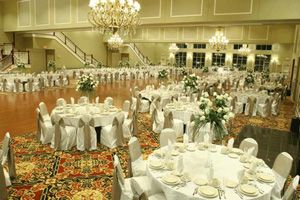 In years past, much of the financial burden of paying for wedding expenses fell on the family of the bride. Hence, most of the wedding planning decisions were made by the bride and her family. However, past tradition has all but gone by the wayside, resulting in a more flexible agreement between families of both the bride and groom about who pays for what.
In years past, much of the financial burden of paying for wedding expenses fell on the family of the bride. Hence, most of the wedding planning decisions were made by the bride and her family. However, past tradition has all but gone by the wayside, resulting in a more flexible agreement between families of both the bride and groom about who pays for what.
When former tradition prevailed, there was much propriety about the obligatory party’s financial responsibilities. By and large, custom dictated that the bride was responsible for the majority of the constituents relating to the wedding day including announcements, the bridal gown and accessories, the bridesmaid’s attire, the reception banquet, the wedding cake, entertainment, and floral items. In essence, the father of the bride paid for the bulk of the high-priced rudiments.
In contrast, the groom was accountable for the engagement rings, expenses related to the ceremony, his outfit as well as those of his groomsmen, and several other minor necessities. Both parties, however, would share the honeymoon costs.
Antiquated Traditions Result in Negotiation
Today, there are no set rules for covering the many expenses occurred in organizing and planning a wedding and reception. With tradition not being adhered to as it once was in the past, most everything has become negotiable in both expenditures and decision making. In fact, sharing the buck has become commonplace.
Reception Banquet – The Most Costly Expense

Although dividing the cost of all the essentials is the preferable alternative to former custom for most families nowadays, with present economy woes and financial hardships, appropriateness plays a big role and is common practice for modern day families of brides and grooms. In other words, one family may be in a better financial position than the other and, therefore, is able to contribute a disproportionate amount of money to pay for the event.
More often than not, contemporary weddings today tend to have both the bride and groom heavily involved in the financing of their own affair, with smaller contributions provided by their families. If they’re fortunate, each family will donate sizably, facilitating the planning process by contributing where needed.

In this day and age, the best way to approach who will pay for what is to have both families meet soon after the engagement to discuss planning and cost. Importantly, all must be on the same page, which is accomplished through an open and candid discussion about who will be obligated for what and what is reasonably affordable for each family member involved.
General consensus typically will be that most families want to help out with expenditures. After all, it is their children’s grandest day of their lives and they surely want to play a role in it. With frankness and shrewd planning, the challenge of meeting the monetary costs of your wedding becomes a much easier task, particularly when financial commitments are clearly made by family members in regard to who will be responsible for each of the various components of your special occasion.
Additional Information
If you need help planning your upcoming wedding or would like information on affordable wedding packages, visit our website to see what Lake Tahoe has to offer.





